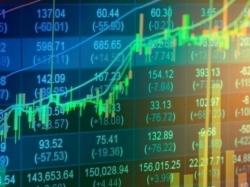Welcome to another entry of “Investing Pioneers”.
Today, I want to delve into the ongoing drama of economic growth and its unexpected victims: the middle class.
The story seems almost Shakespearean; while the US economy shows roaring growth and a resilient job market, a surprising protagonist – interest rates – is slowly eroding the financial foundations of many middle-class families.
The Federal Reserve’s rapid and sustained hike in interest rates to battle the inflationary monster has clearly started taking its toll.
Consider this: a whopping 57% of middle-class participants in a recent Harris Poll mentioned that the rising borrowing costs were negatively affecting their finances.
The primary culprit?
Well, it seems our beloved credit cards are to blame, with US consumers paying a staggering $130 billion in interest and fees last year.
To the uninitiated, this might seem like a mere consequence of a thriving economy that grew at a 4.9% annual rate in the recent quarter.
“Let’s rein in inflation,” they say.
But if you scratch beneath the surface, there’s a personal narrative to every percentage point.
Meet Rebecca Acuna, a 28-year-old paralegal.
For her, the soaring cost of borrowing means deferring the purchase of a new car and dealing with higher grocery and utility bills.
Her story, unfortunately, isn’t unique. 61% of the middle-class respondents feel that their financial situations have either deteriorated or remained stagnant compared to the previous year.
But how do we, the savvy investors, navigate these waters?
1. Diversify Your Portfolio: If you’ve primarily invested in sectors that are sensitive to interest rates, consider diversifying. Assets like gold or real estate investment trusts (REITs) might offer some insulation against rising rates.
2. Bond Laddering: This is a strategy where you purchase bonds that mature at different times. As older bonds mature, reinvest in newer ones, taking advantage of potentially higher yields due to rising rates.
3. Stay Informed: Economic indicators, Federal Reserve statements, and other fiscal policies can hint at the future direction of interest rates. Staying informed helps anticipate market reactions.
However, returning to our middle-class conundrum, it’s evident that the weight of these interest rates combined with inflation is a cocktail of financial strain.
While President Joe Biden aims to champion the middle class’s cause with his “Bidenomics” agenda, the sentiment on the ground varies.
Many still feel detached from economic decisions made in ivory towers.
One profound statement that caught my attention was by Tiffany Bond, a family law attorney, who said, “Economists aren’t sitting at kitchen tables with middle class America.”
And she couldn’t be more right.
For many, wages are constantly playing catch up with bills, and the looming sense of falling behind grows stronger each day.
Yet, amidst this gloom, a sliver of optimism exists.
Not everyone in this demographic feels the same weight of pessimism.
Generational and partisan lines reveal differing outlooks.
For instance, 60% of millennials and Democrats believe the economy works in their favor, compared to just 30% of baby boomers and Republicans.
In closing, the economic narrative is a mixed bag.
On one hand, we have commendable growth and opportunities.
On the other, the tools used to maintain this growth, like higher interest rates, impact the very backbone of the nation.
As for investors, it’s essential to be agile, informed, and ever-ready to adapt to the changing winds of the economic landscape.
Until next time, fellow pioneers.
Stay curious, stay vigilant.
Peter Burke








